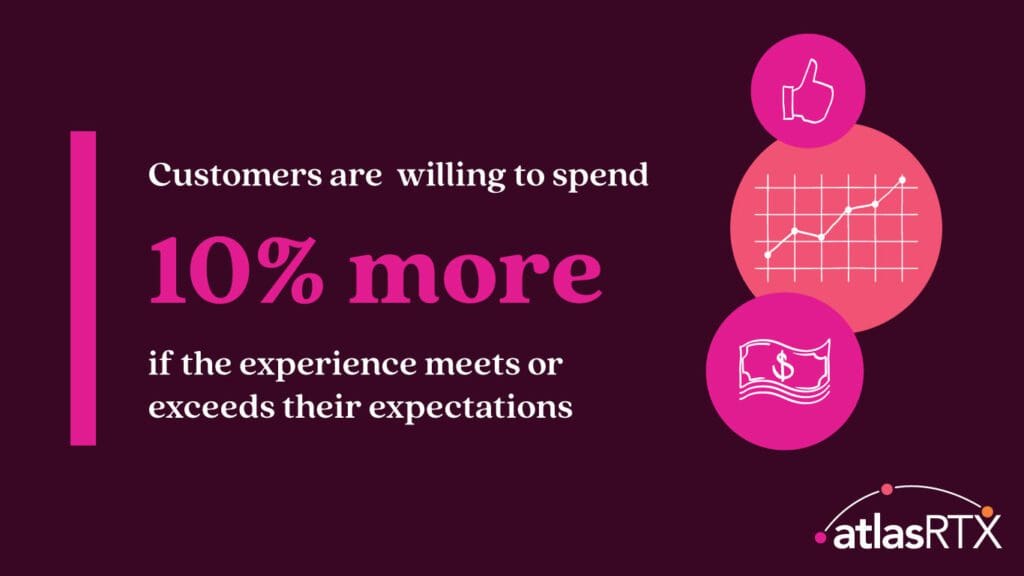As the online customer experience continues to evolve, brands across industries will need to build their strategies specifically to meet and exceed expectations. The concept itself might be timeless. However, it is among the marketing areas evolving most quickly amidst the continued move to digital channels and changing needs.
Of course, understanding what the trends are, and even implementing these trends, are only the first steps toward long-term success. It’s just as vital to optimize the process of measuring efforts. Monitoring the right metrics will help organizations build engaging online customer experiences and find optimization opportunities on an ongoing basis. Let’s dig into the major customer experience trends expected in 2023, and what metrics can help to align your brand with these expectations and trends.

4 Online Customer Experience Trends to Expect in 2023
None of the trends emerging this year have been particularly shocking. At the same time, the throughline of customer brand interactions has been interesting to follow. It leads to some high-level takeaways that we predict will matter more than ever as we move toward 2023:
Customer experience becomes a core differentiating factor.
Research shows that customers across industries are willing to spend 10% more if the experience meets or surpasses their expectations. As even physical products become more service-driven, the experience becomes a key product feature that customers will use to decide which option they prefer.
Personalization moves from desirable to essential.
Preaching personalization in customer service is nothing new. But technology has advanced to the point where it’s essential to make customers happy. McKinsey research found that true personalization in digital experience messaging increased revenue by 10 to 15%. Additionally, 78% of customers became more likely to repurchase from the same brand.
Brand messaging isn’t the only source that matters.
Earlier this year, a report by Gartner estimated that by 2025, 60% of customers will look for information on a brand or product from third-party sources first. The takeaways: brands should be conscious and active when it comes to managing available third-party information. At the same time, they must adjust their own communication to account for the existing knowledge with which customers enter a conversation.
Employee happiness directly impacts the customer experience.
As a recent report by Indeed.com found, 87% of business leaders agree that prioritizing employee happiness is key to creating a competitive customer experience advantage. Happier customer service workers are more likely to provide satisfactory experiences in an environment increasingly dominated by the need for instant gratification.
At first glance, some of these trends may seem overwhelming to account for or implement. That’s why, increasingly, brands are moving to CX automation. Why? CX automation builds personalized experiences that offer instant answers without overloading employees or making customers wait. Implemented the right way, automation has the potential to become a powerful online CX differentiator.
5 Metrics to Measure Online Customer Experience in 2023
Building strategies to account for these customer experience trends can be complex. General best practices don’t always apply equally across industries. And no implementation is created equal. That makes finding the right metrics to measure the success of your online efforts a vital piece of the CX equation. These five metrics will be especially important for brands looking to account for new and evolving customer needs in digital environments:
1. Customer Lifetime Value
Customer lifetime value (CLV) might be the most comprehensive customer experience metric. It measures the loyalty of your customers. Loyalty is and will increasingly be based not just on product quality, but the service surrounding that product. As CX increasingly moves toward a revenue-generating differentiator, CLV helps brands understand just how and why their customer experience helps in that effort.
Depending on the exact business model, CLV might take on slightly different means. For example, recurring revenue models might look more closely at churn rates. Conversely, industries in which one-time purchases are the norm (like home buying) may look more toward the transition from the initial service to secondary services.
2. First Contact Resolution
A classic customer service metric, first contact resolution, describes the percentage of customers that are happy with the outcome of a brand contact. In other words, they don’t require a follow-up. It’s most commonly measured by asking the customer whether their question or concern was resolved at the end of an interaction.
While not groundbreaking, first contact resolution has become increasingly relevant in the modern CX environment. Especially automated services like digital assistants, even when they transition to more personal help, are designed to streamline the process on the customer end. This metric helps to ensure that was the case, or identify any potential issues to fix.
3. Sentiment Score or Analysis
Artificial intelligence doesn’t just power customer-facing tools like digital assistants. It can also help to build better analytics. For example, digital assistants can detect the sentiment a customer feels based on their tone, the words they use, and more.
This sentiment, in turn, can become a vital tool to evaluate how your customers feel about your digital CX efforts. For example, use sentiment to evaluate an active tool like your live chat or digital assistant. Brands can use the average sentiment of responses to cross-reference against the topics in question or even personalization efforts. This helps them better understand where their customer experience succeeds and where it might still need help.
4. Customer Effort Score
How easy is it for your customers to find the information they need quickly and without much effort? That’s what the customer effort score (CES) is designed to measure. It usually consists of a simple survey, asking customers a question like “[your brand] made it easy for me to resolve my issue.” The rating-scale response is then averaged into a larger score.
CES can help account for the increasing need of customers to get responses quickly and efficiently. But it can also measure how well your on-page CX is aligned with potential third-party sources; a lack of alignment will typically lead to confusion, causing the score to drop.
5. Employee Satisfaction
Finally, measuring the satisfaction of your customer-facing employees can go a long way toward measuring the effectiveness of online CX. Put simply, happier employees are more likely to go the extra step to help customers on the other side of a live chat or website update.
We know that the volume of customer service contacts is rising, and the number of professionals equipped and qualified to manage these contacts is not rising alongside it. Keep your employees happy by strategically managing incoming contacts. For example, use digital assistants to answer common questions. This allows staff to focus on more strategic or in-depth tasks. As a result, you will maintain a positive digital CX.
Prepare Your Online CX Efforts for Modern Customer Needs
As customer needs continue to change and evolve, building a strategy to account for these rising expectations is absolutely crucial. Finding the right metric is one step toward that goal, and so is making sure you have the right tool in place to both implement and measure an improved customer experience. Digital assistants, when implemented the right way, can go a long way towards accomplishing both. Talk to the team at AtlasRTX to learn more about how digital assistants can help your brand improve the online customer experience.


